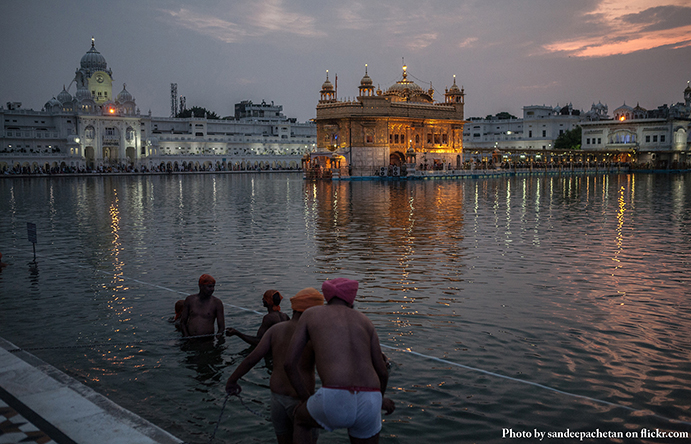
Is there anything that India can learn from China? Skeptics may say no. The governance systems of two countries are worlds apart. However, we argue that China can offer potentially useful lessons on water governance. Such argument is important as the
world observes the 24th World Water Day (March 22nd, 2016).
This, at least, is the conclusion of researchers at the Institute of Water Policy at the Lee Kuan Yew School of Public Policy, National University of Singapore. The study surveyed 182 water experts from 19 provinces/states in both countries, including
engineers, water legal experts, academics, economists and bureaucrats. They then compared 17 indicators of water governance in terms of water laws, policies and administration.
As the two largest developing and water-stressed countries, China and India are similar in that both are facing a water crisis due to rapid urbanization and industrialization and the attendant problems of pollution, as well as inefficient water use.
The Yellow River in China has been badly polluted by more than 4,000 petrochemical firms to the extent that it is no longer fit even for agricultural use. Likewise, the Ganges River is one of the most polluted in the world. Only half of China’s urban
water sources are safe to drink, while more than half of the groundwater in the Northern provinces cannot be used for industrial purposes. India’s story is not much different. Tourists are advised not drinking tap water in India. However, the similarities
stop here.
The difference lies in the approach to water governance. For instance, China’s main approach to solving its water (and energy) crisis is to build more large dams and diversion canals. Some 22,000 medium to large sized dams (at least 15 meters) have been
built since the 1950s, including the world’s largest dam – the Three Gorges Dam with a capacity 10 times that of Hoover Dam and world’s largest water transfer project – the 2,700 mile South–North Water Transfer Project. These water and power projects
helped China’s rapid industrialization, urbanization and growth.
In contrast in India, dam building has been a much more difficult for a variety of reasons. First, conflicts over water rights are prevalent among different states and among different user groups (farmers, urban users, industries). Cases drag in courts
for years and projects cannot be started. Second, India’s democratic system of governance means that there are far more veto players in the approval process for dam building. Third, unlike China, state governments in India do not have the same capacity
– engineering, financial, administrative and political capacity – to undertake massive dam building projects.
There are other things that make water governance in China different. Many of China’s top political leaders were trained in water management including former President Hu Jintao who has a degree in water engineering. In contrast, in India, none of its
top national and state leaders have formal training in water management. Chinese universities have established world-class training programs for water professionals. The Yellow River Commission alone has about 40,000 water professionals. India has no
such equivalent agency.
Moreover, In China, energy and water state-owned enterprises are somehow more powerful than the Ministries and provincial governments. They can get things done. In contrast water agencies in India are not as politically powerful because they have been
weakened by a large number of veto players and have been highly politicized. In China, local governments are able to raise water tariffs to fund expansion of water supply. In India, It is very difficult to raise tariffs and hence very little resources
to expand services. In China, water issues are consistently on the very top of the political agenda in China. Not so in India, except when Delhi becomes dry.
Academic research shows that improving water governance holds the key to improving water security in developing countries. Notably, China’s achievements and determination in water governance are remarkable. Only in past five years, China solved the problem
of drinking water safety for over 300 million rural people. In the next five years, China plans to ambitiously reduce its water consumption per unit of GDP by 23%, and only this year 20 new major water conservation projects will be initiated.
Therefore, the main lesson from China is this: If India is to grow rapidly in the next 30 years – as did China – it has to decisively address its water problems now. For a start, India’s politicians should put water on top of their agenda. Good water
economics is good politics.
Eduardo ARARAL, Vice Dean (Research), Associate Professor, and Director of the Institute of Water Policy from the Lee Kuan Yew School of Public Policy at the National University of Singapore.
SUN Xi, Independent Commentary Writer based in Singapore.
This
article first appeared on the Business Times on 22 March 2016.